Charts of the Week
Current economic trends from 27 to 31 May 2019: Gross domestic product, Nominal turnover in market services, Trade, Prices and Labour market
Economic growth remained high at the beginning of the year. The growth of exports and domestic consumption continued, the growth of construction investment standing out in particular; private consumption is also on the rise, consistent with the continuation of favourable labour market developments. Year-on-year price growth dropped somewhat in May.
Gross domestic product, Q1 2019
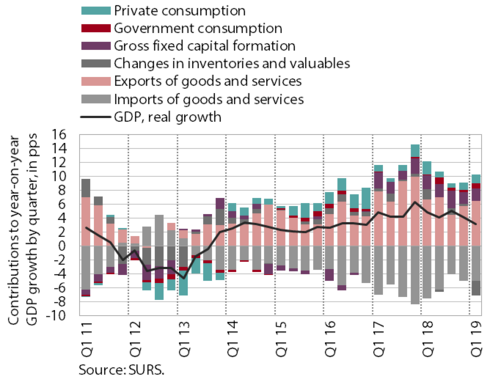
Year-on-year real GDP growth remained relatively high in the first quarter (3.2%). According to seasonally adjusted data on year-on-year and quarterly growth, economic growth did not moderate in the first quarter. It was mainly driven by exports and domestic consumption. The growth of private consumption strengthened slightly, reflecting favourable labour market developments. The strong growth of gross fixed capital formation continued, supported primarily by construction investment; owing to a significant fall in inventories, gross capital formation nevertheless declined. Export growth was relatively high, following the slowdown in the second half of last year. It coincided with solid growth in industrial production. Both are linked to strong growth in some activities, which could, at least in part, be temporary.
Nominal turnover in market services, March 2019
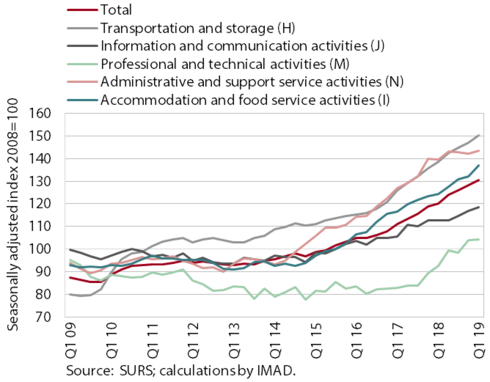
The strong growth of turnover in market services continued in the first quarter. Growth in accommodation and service activities accelerated owing to higher spending by domestic and foreign tourists. Exports of road transport services remained the main factor of turnover growth in transportation. Turnover growth in information and communication activities continued to derive not only from computer, but also from telecommunication services, where turnover had stagnated for a long period of time. The growth of turnover in administrative and support service activities seen in the recent period has many been driven by growth in the sale of services outsourced to external providers.
Trade, March 2019
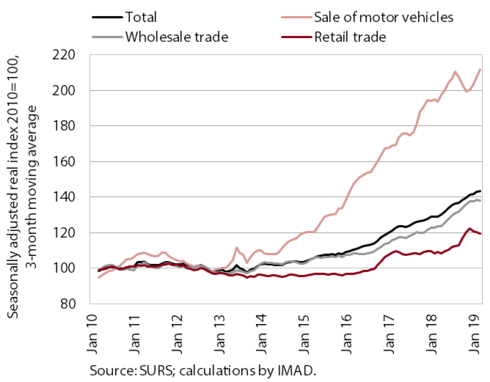
Turnover in trade increased further in the first quarter and was a tenth higher year on year in real terms. Turnover in the sale of motor vehicles has been rising again since the end of last year, after dropping substantially with the introduction of the new test procedure for determining fuel consumption and exhaust emissions in the middle of 2018. Turnover growth in wholesale trade continues at a moderate pace, after last year’s strong growth, which was also a result of increased sales in some energy products. In retail trade – which is otherwise marked by significant fluctuations in the sales of automotive fuels – the sale of non-food products has been rising strongly for the fourth consecutive year, which is related to increased spending by households. After the decline in the first half of last year, moderate turnover growth is also recorded in the sale of food products, beverages and tobacco products.
Prices, April 2019
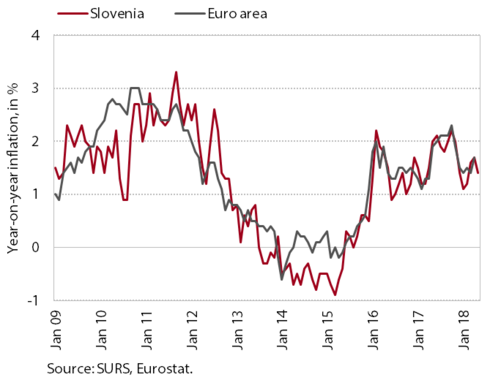
Year-on-year growth in consumer prices dropped somewhat in May, in line with expectations. Lower growth was recorded particularly for prices of services, which, amid rising household consumption, still contribute the most to inflation. The contribution of prices in the recreation and culture group declined, but remained close to 8% due to somewhat lower growth in prices of holiday packages. The contribution of prices of communications was negative. Year-on-year growth in prices of goods remains low (just below 1%), as prices of semi-durable and durable goods continue to fall year on year.
Labour market, the survey on active and non-active population (LFS), Q1 2019
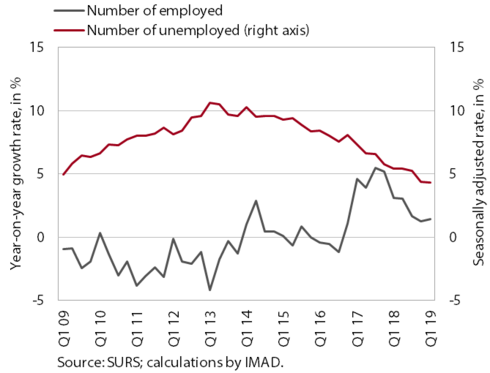
The results of the Labour Force Survey (LFS) also show that favourable labour market conditions continue. In the first quarter of the year, the number of employed persons increased further, particularly owing to the increased employment of foreign nationals. The number of unemployed persons according to the survey remains low, but the share of long-term unemployed among the unemployed is still relatively high.
